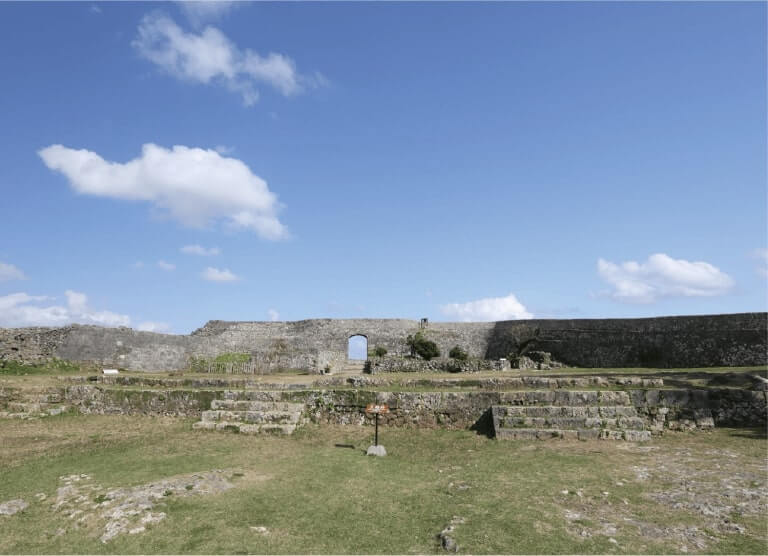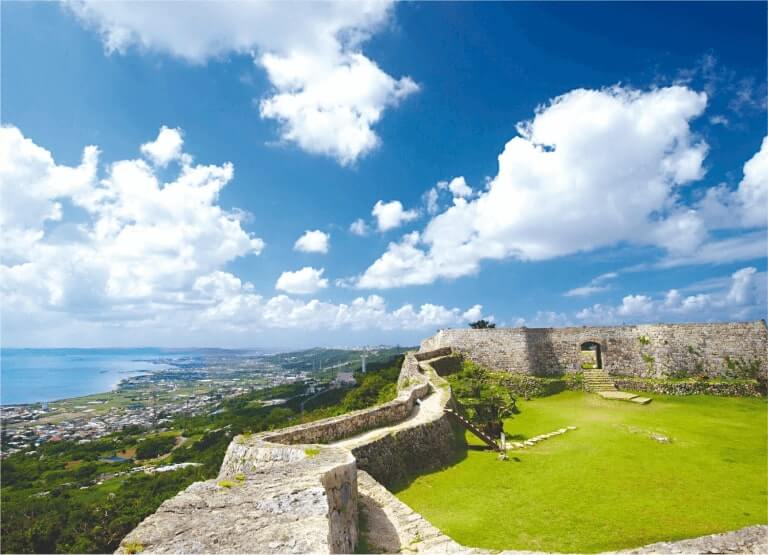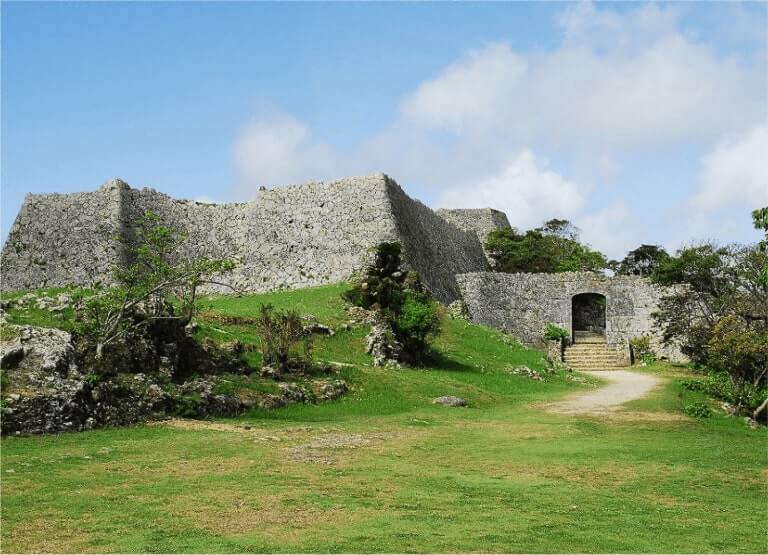- HOME
- About Nakagusuku - Castle Ruins
About Nakagusuku - Castle Ruins
Nakagusuku Castle: Located in the middle of Chuzan
Nakagusuku Castle stands on a hill with a fine view and an approximate elevation of 160m. The first enclosure overlooks the East China Sea in the west,
and Nakagusuku Bay (Pacific Ocean), the Katsuren Peninsula, the Chinen Peninsula, and other surrounding islands including Kudaka Island in the east.
The location was perfect to keep an eye out for Chūzan at that time.
Nakagusuku Castle was built by the former Nakagusuku Aji before Gosamaru. The third and the north enclosures that still exist today were built as additions by Gosamaru who became Nakagusuku Aji in around 1440, and as with Zakimi Gusuku, you can find the advanced fortification techniques there.
It was his second time of fortification for Gosamaru and it can be noted that this was a more sophisticated gusuku in terms of functionality and defense.
In particular, you can see Gosamaru’s remarkable fortification techniques in the ramparts. He was confident of the quality of the “Aikata-zumi” masonry technique he had experimented on at Zakimi Gusuku, and he completed even more sophisticated, superb ramparts that incorporated the best technology of the time in terms of strength and defense. Therefore, the ramparts have never collapsed until today.
In addition to the masonry techniques, the arched gate at the rear gate is notable.
The beautifully curved gate stands there with dignity. Furthermore, it can be pointed out that Ufugaa (big well) as the water source is secured at the north enclosure.
Gosamaru’s high level of fortification techniques allowed him not only to secure the water source but also to prevent ground erosion by developing a drainage facility.
It is said that the first castle with full-scale stone masonry in Japan was Komakiyama Castle, built by Oda Nobunaga in 1563.
This reveals that Ryukyu had developed stone fortification techniques more than 120 years earlier than Japan, and thus proves Gosamaru as a genius of fortification who promoted these advanced techniques.
Explore the Nakagusuku Castle Ruins
-

The First Enclosure
This enclosure sits in the highest location of Nakagusuku Castle and has the largest site area. The Seiden (the main palace) was once located there, and surprisingly, it was used as a magiri bansho (an old public office) during the late 17th century and as the village office of Nakagusku temporarily in the Meiji era. From the excavation research, about 700 archaeological remains have been discovered in which supposedly there were buildings from the 13th century to the modern period.
-

The Second Enclosure
This is situated on land one level below the First Enclosure. Its ramparts form a beautiful curved line and a stone laying technique called Nunozumi is used. A place of worship, Shiraitomi no Oibe can be found by the stairs leading to the First Enclosure from the Second Enclosure. According to the excavation research, a masonry retaining wall of 1.5m high was constructed underground to prevent a landslide.
-

The Third Enclosure
This was added by Gosamaru, and was also known as Mii gusuku. From the excavation, celadon bowls with fretwork were unearthed near the foundations of the rampart. This indicates that it was constructed during the mid-15th century, and therefore confirmed that it was added by Gosamaru.
